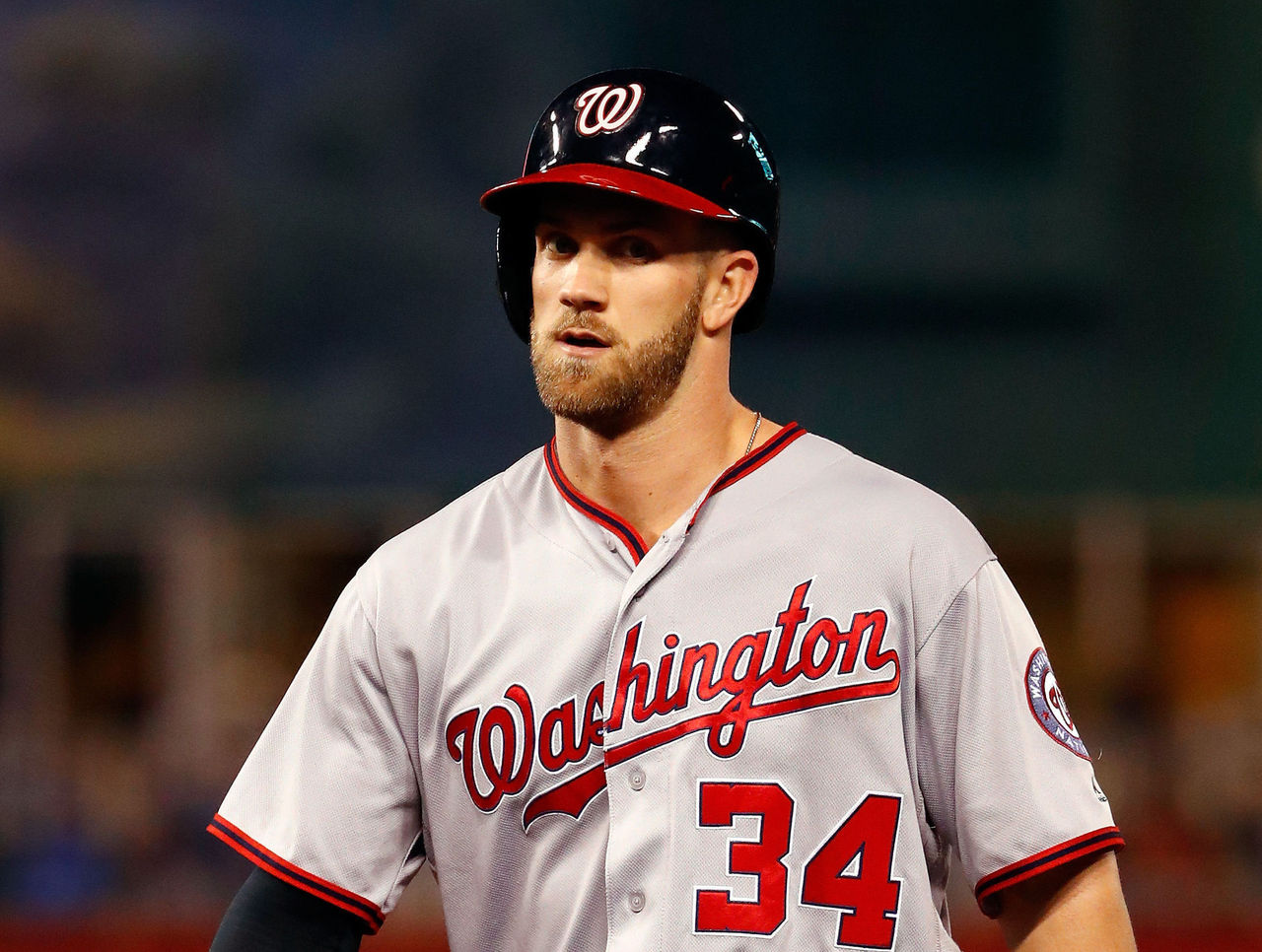Debate Team: Are Bryce Harper's Walks Hurting His Fantasy Value?
A consensus top-3 selection heading into 2016 fantasy drafts, Washington Nationals OF Bryce Harper immediately justified that ranking with six home runs in his first 11 games. Since then, he's added just five more long balls to his total, while leading baseball in one particular category - walks. With Harper receiving the Barry Bonds treatment from opposing pitchers, does this newfound respect help or hurt his fantasy value?
Ken Conrad: "Hurting" is a relative term, since he's currently the ninth-ranked player in Yahoo! fantasy leagues, but the frequent walks have to be considered a net negative. A consequence of all those free passes is that Harper's OBP sits at .430, the fourth-best mark in baseball, and that's certainly an asset in formats that count that statistic as well as OPS.
Still, Harper wasn't drafted third overall (or higher) for his ability to reach first base more often than anyone. The 23-year-old slugger was picked in the hopes that he'd build on his breakout 2015 campaign, in which he stayed healthy and racked up 42 home runs and 99 RBIs, while batting .330 and reaching base at a .460 clip.
Harper averaged 0.81 walks per game last season; his 2016 mark sits at 1.06. His intentional walk total of 15 has already surpassed the 13 he accumulated last season. Washington's middle-of-the-road lineup has resulted in pitchers opting to take away its biggest threat, rather than risk Harper sending a pitch into the cheap seats.
David Chernish: He's so dangerous every time he steps up to the plate, I don't blame opposing pitchers for letting him take a base. Through his first 13 games this season, Harper had more home runs (seven) than strikeouts (six), with nine walks. That's a pretty amazing feat if you ask me.
Sure, the opportunities to launch homers have diminished due to the amount of walks and his average has dipped from .286 in April to .245 through May, but his production and upside suggests he's still an everyday starter. He sports a ridiculous .770 OPS thanks to his 48 walks.
Add the fact that May is one of the months Harper struggles the most, and there's no reason to be too concerned. Pitchers haven’t been able to strike him out when he sets foot in the batter's box, so they walk him. With Harper drawing comparisons to Barry Bonds and the specific 'walk treatment' he received, statistics tell us he can be just as productive as last season.
Bonds hit 45 homers in 2003 with a ridiculous 26.9 percent walk rate. Harper, right now, owns a mark of 25 percent If Harper tweaks his approach and becomes more aggressive with the pitches he does see, he'll be fine.

KC: He'll definitely remain a productive season-long player, and I certainly wouldn't advocate trading or benching him. Still, I'd be concerned with his monthly splits thus far:
| Month | Avg. | HR | RBIs | Walks |
|---|---|---|---|---|
| April | .286 | 9 | 24 | 17 |
| May | .197 | 2 | 7 | 31 |
There's no question Harper is in a slump right now, and while it's way too early to say with certainty that his extended dip in form is due to a lack of rhythm at the plate from being walked so much, I can't help but wonder if it is. I'm sure he's the only player batting under the Mendoza line for the month who is still averaging better than one walk per game.
The Nationals jumped out to a 16-7 record in April, but are just 12-12 in May, so it appears the strategy of putting Harper on base is working for opposing teams. Unless the lineup around him improves, I wonder if he'll get a chance to live up to his power potential.
He's still on pace for a terrific season, but that's largely due to his April production. How he does from now through the All-Star break will go along way to seeing if fantasy owners who drafted Harper third or higher will regret not choosing, say, Clayton Kershaw or Manny Machado.
DC: It's extremely tough to draw a comparison to Kershaw and Machado, as they were both long shots to be considered top-3 consensus draft picks.
Nevertheless, I'm a strong believer this is nothing more than a slump after a remarkable start to the season. Harper will adjust. OF Ben Revere's game-changing leadoff abilities are beginning to show, as he is hitting .303 with a .361 OBP over his last eight games; that's just what the Nationals need after his dreadful stretch of just four hits in 39 at-bats in nine games prior.
The big question mark for Harper's production moving forward is, who will bat second? Right now, OF Jayson Werth occupies the spot and has a stellar .333/.429/.417 slash line in the past week. If Revere and Werth keep reaching base, pitchers will second guess intentionally walking Harper, with the scorching hot Daniel Murphy lurking in the shadows at cleanup.

KC: An improvement from Ryan Zimmerman (.242 average, .732 OPS) at first base, who has regularly batted fourth or fifth this season, would undoubtedly provide Harper with more protection as well.
Overall, I think how Harper is being pitched to, and how it affects his production, will provide some food for thought heading into next season. Will he remain a top-3 pick or will he drop somewhere inside the top-10? It's obviously still early, and the Nationals could strengthen their lineup, but it's worth watching.
DC: For Harper, he just needs to continue being Harper. He started the year off in another world, but has crashed back down to earth.
It's a long season, and additional help is surely on the way for the Nationals, whether it be in-house or elsewhere. Slumps are part of baseball, and not even Harper is immune.